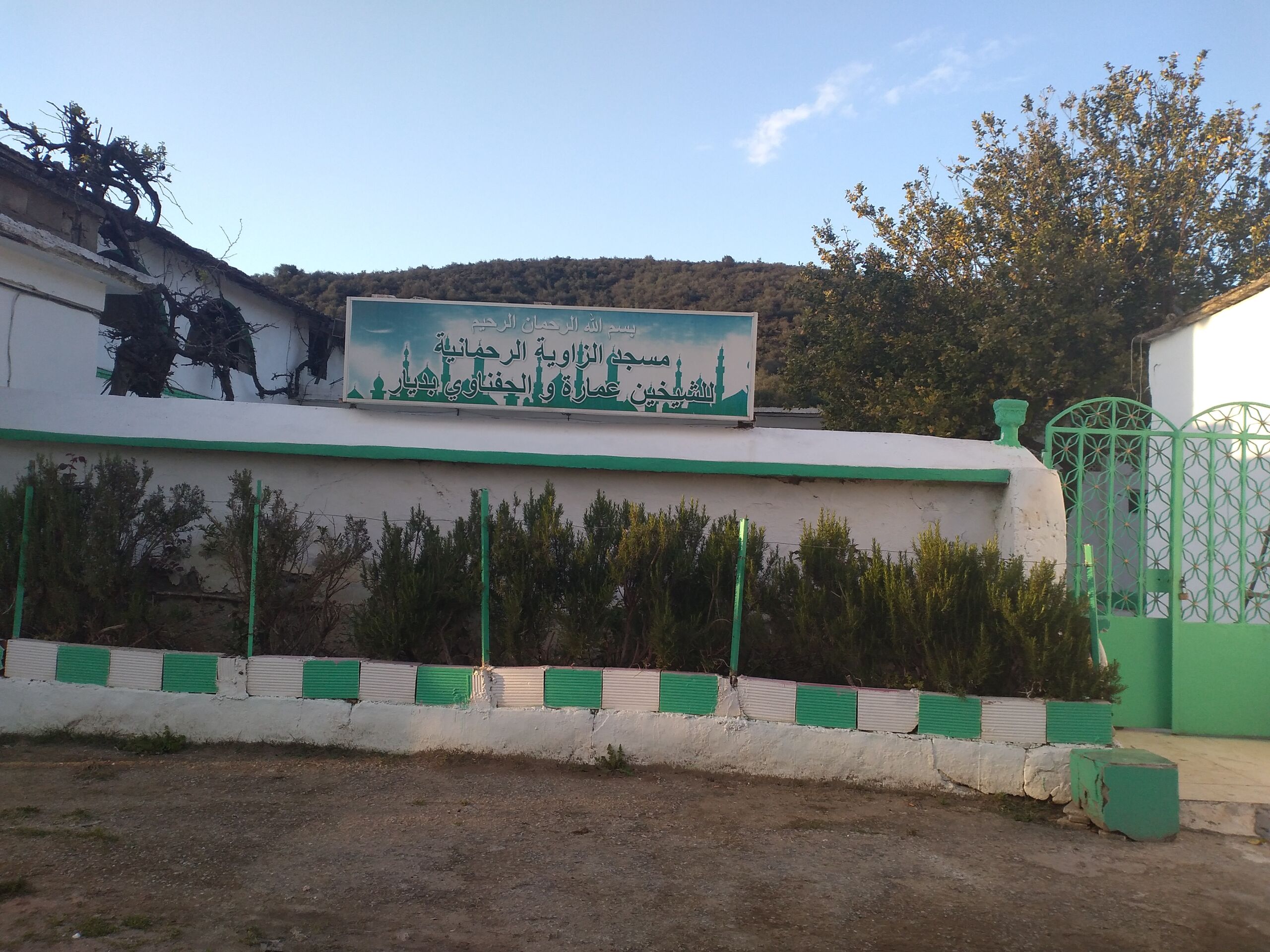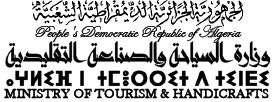The Rahmania zawiya of Cheikhs Amara and Mohammed El-Hafnaoui Beddiar is located in the village of Nador in the municipality of Beni Mezeline, 22 km east of the town of Guelma, on the banks of the Oued Seybouse. It was classified as national heritage in 1999.
The Zawiya was founded in 1869 by Cheikh “Amara Beddiar”. The lineage of his father Saleh goes back to the Beni Amrane, who are the descendants of Idris El-Akbar, who came from the East at the time of the famous Abbasid Caliph Haroun Er Rachid. Cheikh Amara Bedyar is one of the disciples of the scholar and spiritual symbol of the El-Mokrani revolution against French colonialism in 1871, Cheikh “Mohamed Ameziane ben Ali, called Cheikh El-Haddad”. He studied in his Zawiya in Seddouk in Bejaia, until he graduated, before returning to Guelma where he built his Zawiya in the village of Nador.
The Zawiya was a place of scientific and religious education. The building is made up of four adjacent buildings, each with a particular role: the Zawiya mosque, a Qur’anic school, a place to help the needy and another for conciliation. Since its establishment it has played a leading role in the region in the field of learning the Qur’an and religious sciences for young people (internal and external), spreading correct knowledge of the teachings, beliefs, rules and etiquette of Islam, and fighting against ignorance, witchcraft and heresies. It also had a national, cultural, social and charitable role in addition to the scientific, religious and educational role. It provided help and relief to the poor and needy, strengthened the bonds of brotherhood, national values, love of religion and homeland, and belonging to the Arab-Islamic civilisation. It worked to counteract colonial schemes aimed at stripping the Algerian people of their originality and identity. Hundreds of students graduated from this Zawiya. Many of its students sacrificed themselves for the fatherland.
Its founder was placed under house arrest by the colonial authorities and imprisoned in the town of Guelma. After his death in 1901, he was replaced by his son Mohammed El-Hafnaoui Baddar, who continued on the path traced by his father with the same determination and will. He left many important manuscripts dealing with the life of the Prophet, hadith, jurisprudence and history. He died in 1943. The Zawiya continued its activity after him under the direction of his son Cheikh Abd-El-Madjid until it was closed by French colonialism in 1958.




